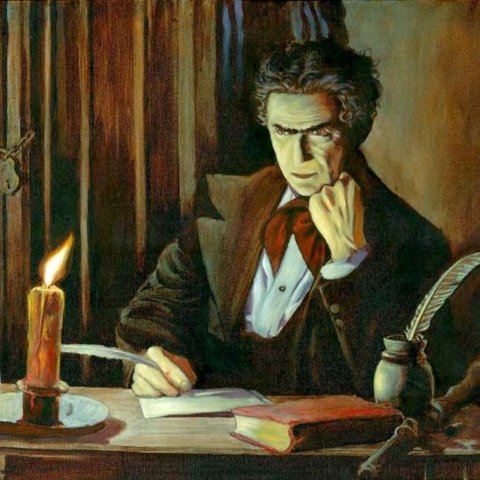
Dupin is a Paris gentleman of leisure who for his own amusement uses “analysis” to help the police solve crimes. In the highly popular short stories “The murders in the Rue Morgue” (1841) and "The Purloined letter" (1845), as well as the less-successful “The Mystery of Marie Roget” (1845), Dupin is depicted as an eccentric, a reclusive amateur poet who prefers to work at night by candlelight
Dupin, a man of genious, is perfeclty described as a typical
detective in Literature. A literature in which a crime is introduced, investigated
and needed to be revealed: “He derives pleasure from even the most
trivial occupations bringing his talent into play. He is fond of enigmas, of
conundrums, of hieroglyphics; exhibiting in his solutions of each a degree of
acumen which appears to the ordinary apprehension præternatural”
Dupin has a
greater power of observation and a superior mind: “He makes, in silence, a host of
observations and inferences”. He prefers to observ during the night and
work at night. He likes walking the streets in the dark with his companion: “At
the first dawn of the morning we closed all the messy shutters of our old
building; lighting a couple of tapers which, strongly perfumed, threw out only
the ghastliest and feeblest of
rays. By the aid of these we then busied our souls in dreams
- reading, writing, or conversing, until warned by the clock of the advent of
the true Darkness.”
He lives in
a constantly stage of reflection and he is introduced as a poor gentleman
descended from a noble family who is literate: “This young gentleman was of an
excellent - indeed of an illustrious family, but, by a variety of untoward
events, had been reduced to such poverty that the energy of his character
succumbed beneath it, and he ceased to bestir himself in the world, or to care
for the retrieval of his fortunes.”
He possess an analytic ability, he analyses
everything even when the narrator seems distracted during the first pages of
the story. He acquires a method of deduction that sometimes it makes you think
how fast a mind works.
As regards the murder
itself, Dupin reads the newspaper but refuses to judge the murder just by
reading an article: “There´s no method in their proceedings” : “We
must not judge of the means,” said Dupin, “by this shell of an examination. The
Parisian police, so much extolled for acumen, are cunning, but no more. There
is no method in their proceedings, beyond the method of the moment.”
He is interested in
the unrevealing mysteries and things that are hard to understand. He uses the
analogy of playing games such as chess or card games to clarify his point of
view: “I will, therefore, take occasion to assert that the higher powers of
the reflective intellect are more decidedly and more usefully tasked by the
unostentatious game of draughts than by a the elaborate frivolity of chess”.
He combines analysis and intuition to solve
the crime: “His results, brought about by the very soul and essence of method,
have, in truth, the whole air of intuition.”
Comentarios
Publicar un comentario